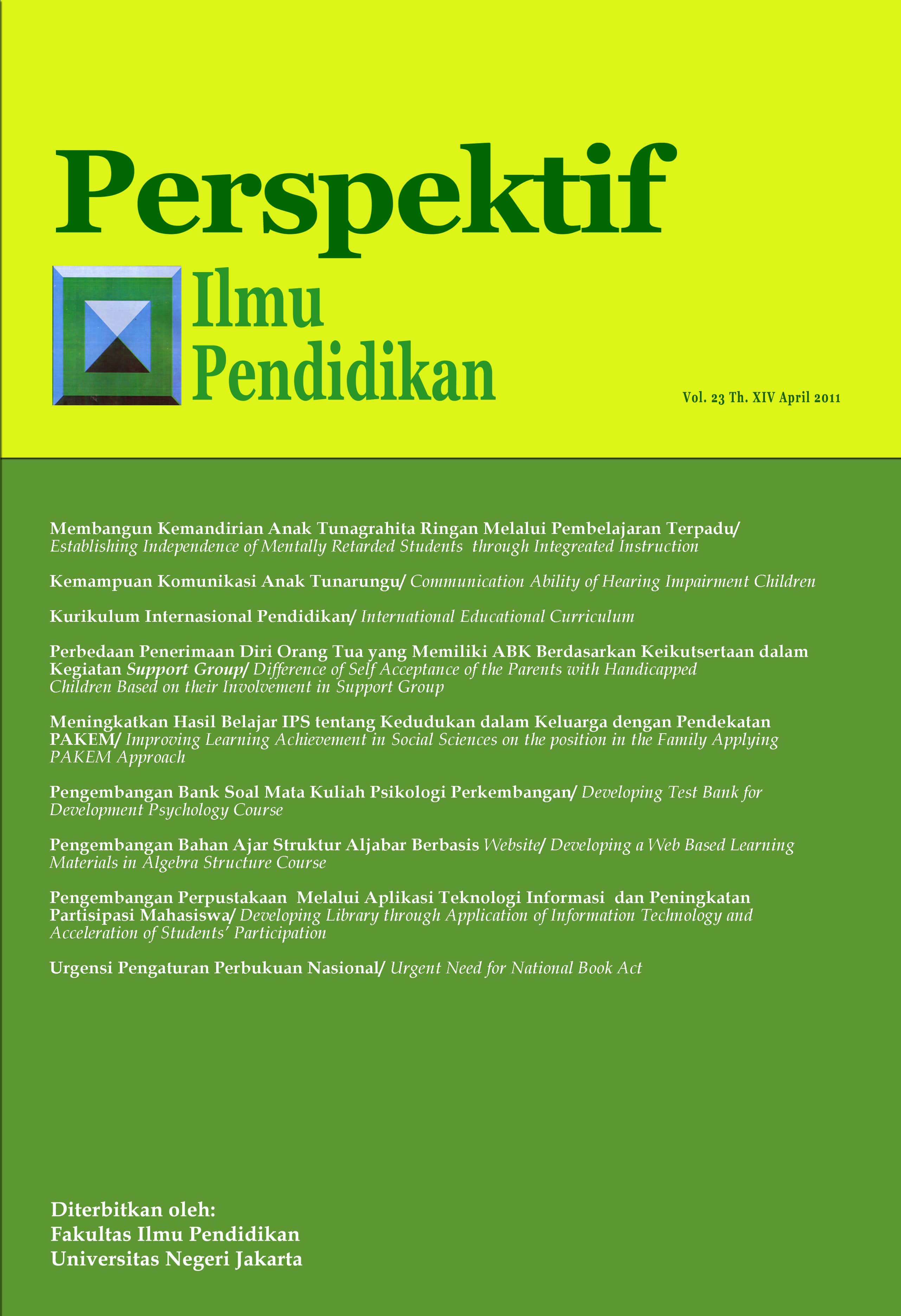KEMAMPUAN KOMUNIKASI ANAK TUNARUNGU
DOI:
https://doi.org/10.21009/PIP.231.2Keywords:
learning strategies, levels of deafness, verbal and nonverbal communication abilityAbstract
This research aimed to find out the influencing differences of variables such as learning strategies and levels of deafness toward the verbal and non verbal communication ability in hearing impairment children. Besides, this research also aimed to find out whether there are interactions between two independent variables or not that influence verbal and nonverbal communication ability in hearing impairment children. For those purposes, an ex post facto comparative research was conducted to compare the influence of MMR learning strategies and conventional learning strategies that had been done at Special Needs Elementary School for Hearing Impairment Children by noticing the levels of deafness (hard of hearing and deaf) toward verbal and nonverbal communication ability. In the line of the problems,this research used a factorial design 2x2 to respond the verbal, nonverbal, and combination of verbal and nonverbal communication ability. The results of this research are (1) overall, hearing impairment children classified as hard of hearing and deaf who study by using MMR learning strategy have higher communication (verbal and nonverbal) ability than those who study by using learning strategy conventionally; (2) overall, based on the levels of deafness, hearing impairment children classified as hard of hearing have higher communication ability than hearing impairment children classified as deaf; (3) there are interaction influences between the learning strategies and levels of deafness toward communication ability in hearing impairment children.
Downloads
Published
How to Cite
Issue
Section
License
Authors who publish with this Journal agree to the following terms:
- Author retain copyright and grant the journal right of first publication with the work simultaneously licensed under a creative commons attribution licensethat allow others to share the work within an acknowledgement of the work’s authorship and initial publication of this journal.
- Authors are able to enter into separate, additional contractual arrangementfor the non-exclusive distribution of the journal’s published version of the work (e.g. acknowledgement of its initial publication in this journal).
- Authors are permitted and encouraged to post their work online(e.g. in institutional repositories or on their websites) prior to and during the submission process, as it can lead to productive exchanges, as well as earlier and greater citation of published works.
-
Users/public use of this website will be licensed to CC BY-NC-SA Creative Commons Attribution-NonCommercial-ShareAlike 4.0 International License












